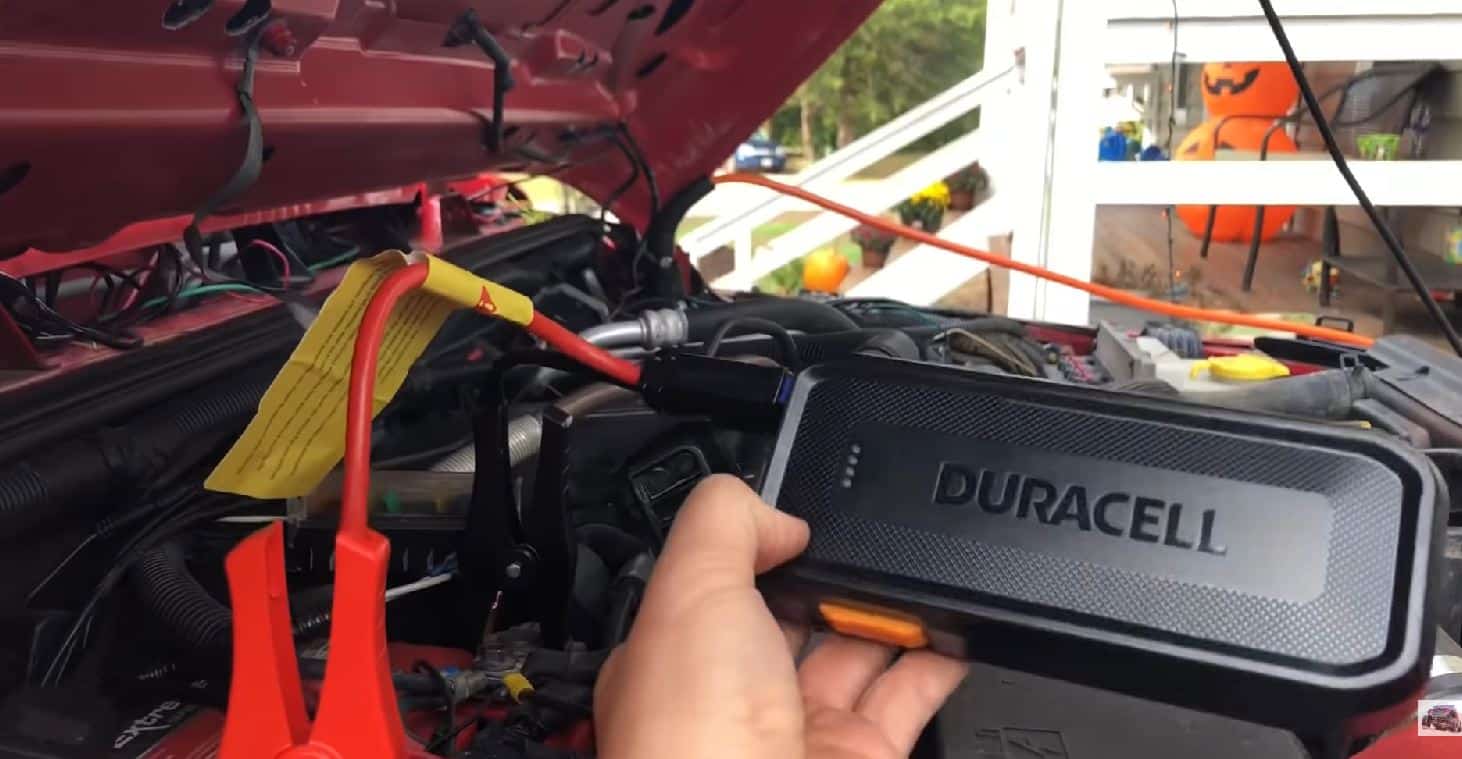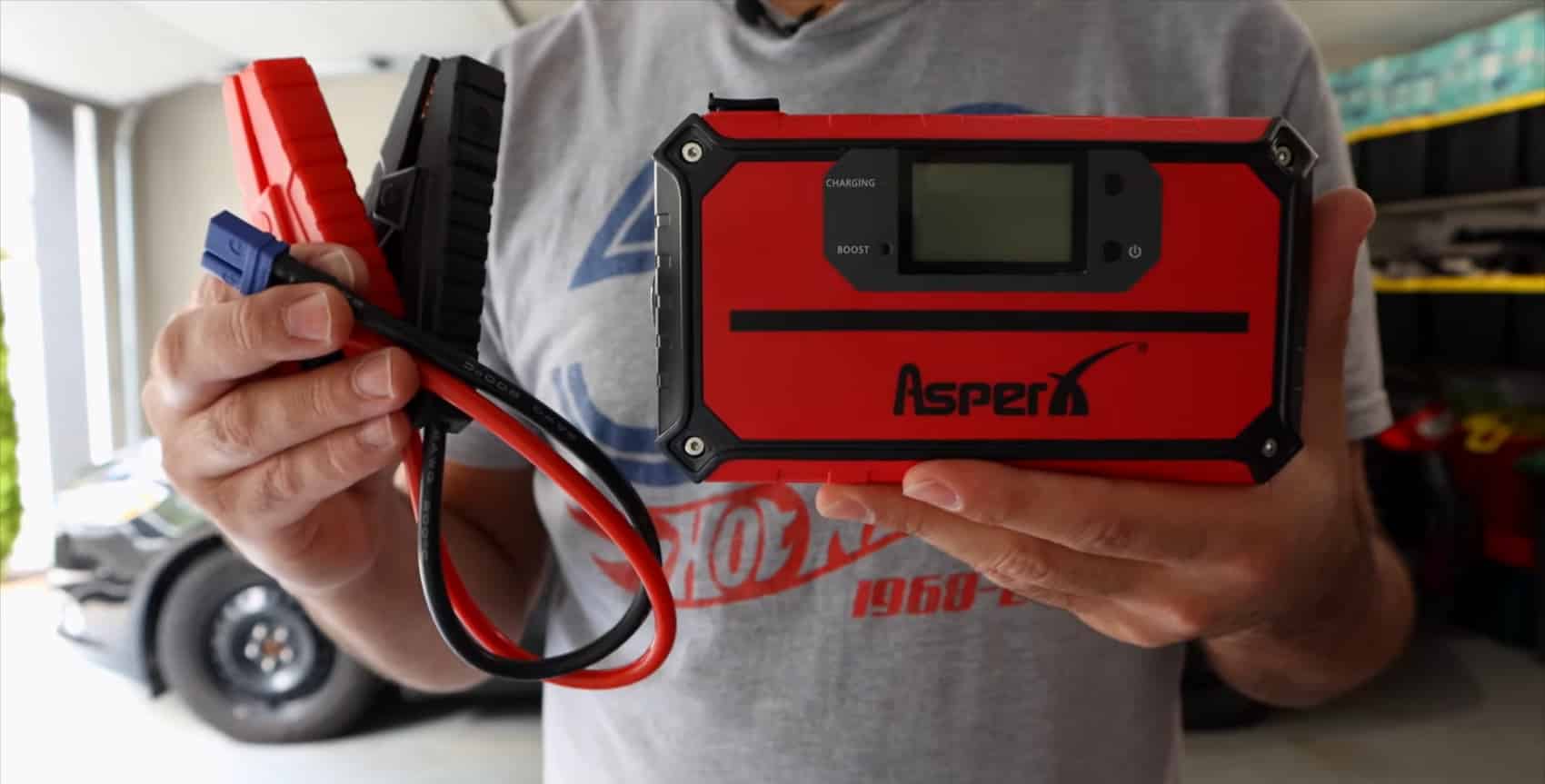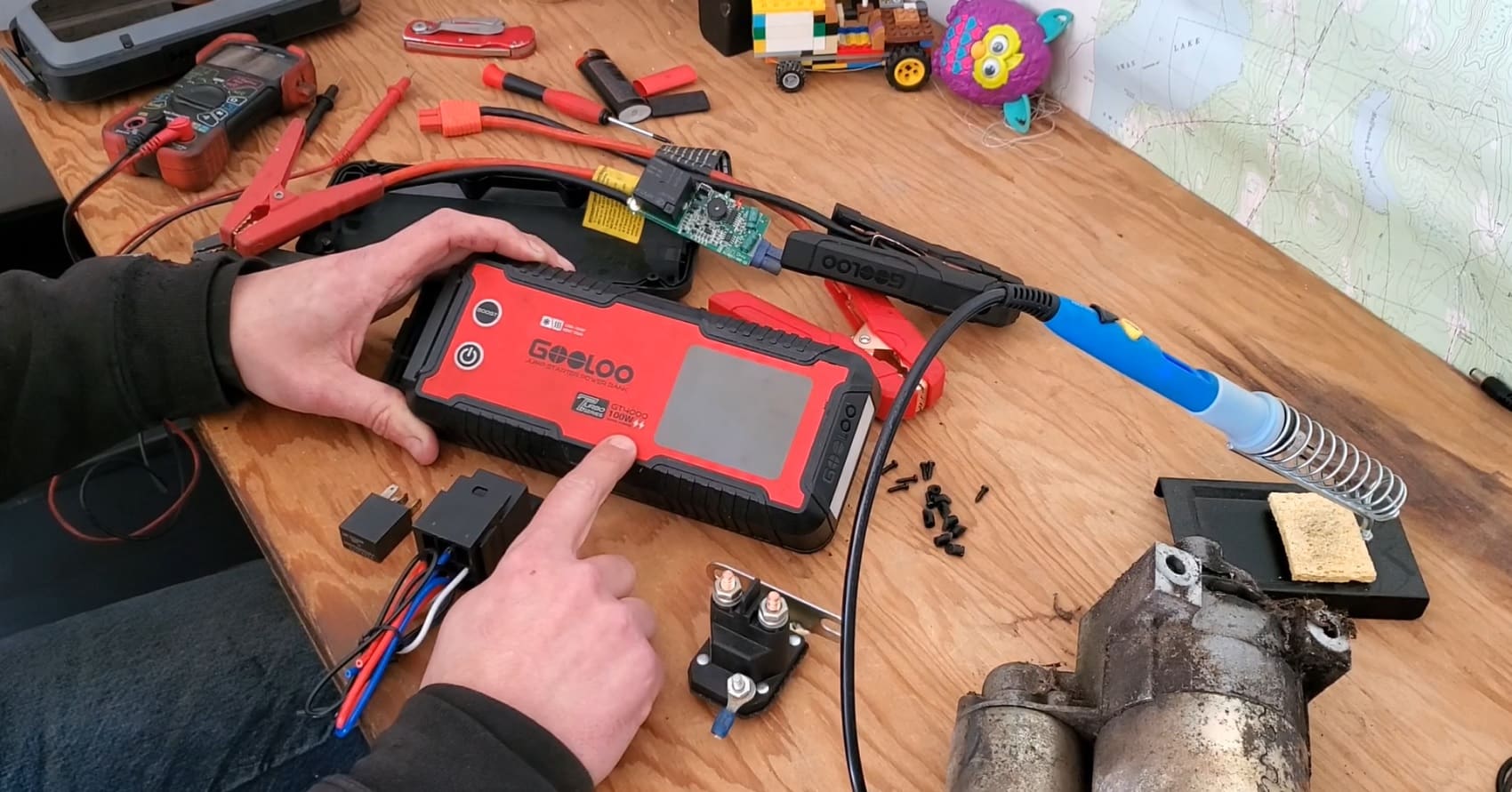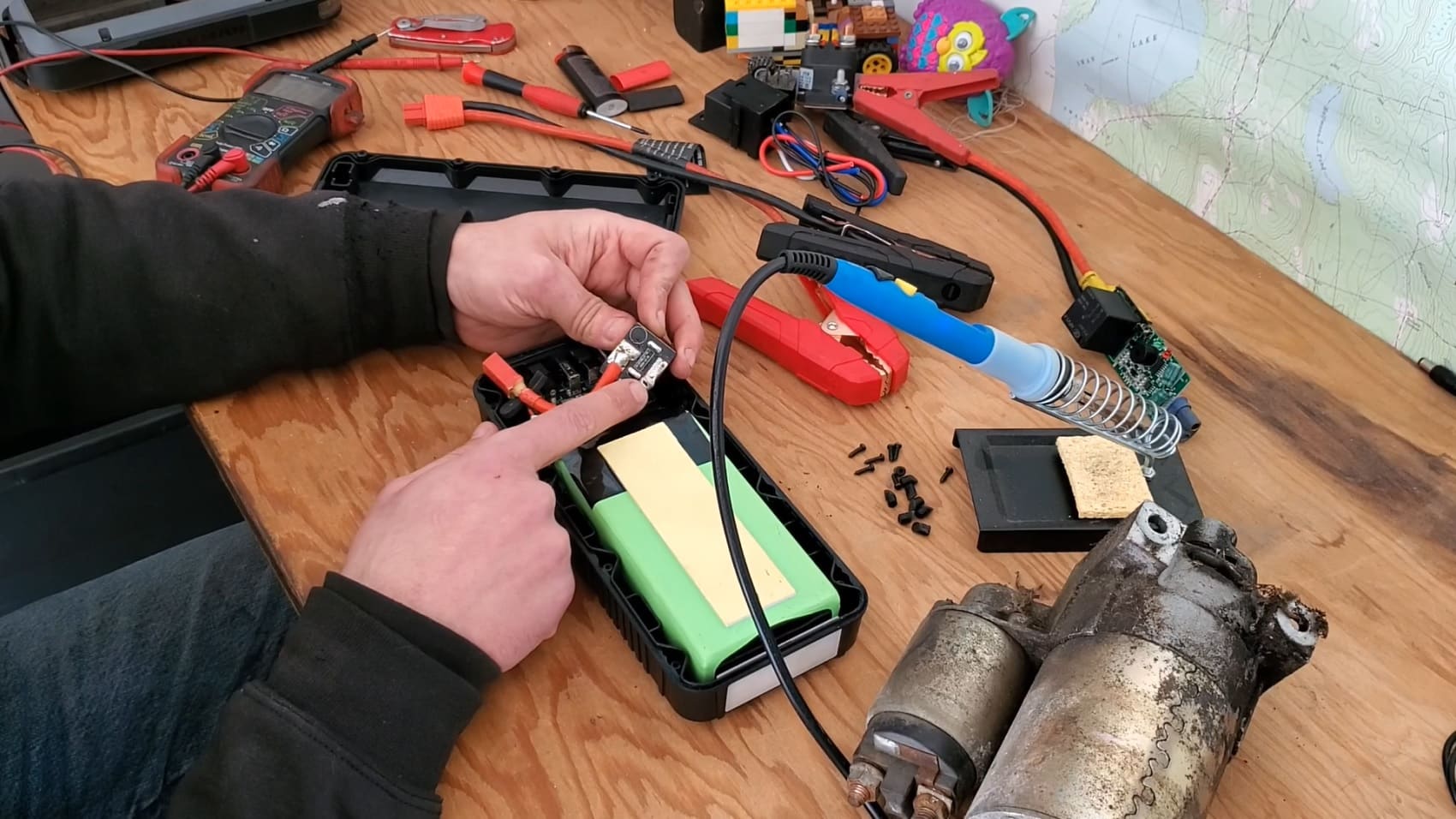
A portable jump starter is a tool that saves you when the car battery is down. This is a great helping hand in emergencies. But doctors become sick too. Similarly, you’ll face situations when you’ll find that the portable jump starter not charging.
A common issue in jump starters is it stops receiving charge sometimes. As a result of this, it can’t help you with jump-starting your vehicle anymore. So, what should be your action in such a case? Would you go for buying another one?
The good news is you have something to do in this case. This situation may not require you to spend money on buying another one. But before knowing what to do in this case, you should know the reasons behind such an issue.
The Reasons Why Portable Jump Starters Not Charging

Troubleshooting for Jump Starter / Image by Joshua Koblin
1. The Battery Life is over
Jump starter batteries come with a specific lifespan. A typical lifespan of a jump starter battery is around 5 to 7 years.
Your jump starter battery will last this long if you take care of it properly. If not, the battery will be inactive long before the expected lifespan is finished.
When the battery life is over, it won’t receive a charge anymore.
2. The Weather Condition is Not Suitable
Jump starter batteries come with the ability to tolerate moderate weather conditions. Typically a Lead-Acid battery can withstand a temperature of around 50 Degree to 70 Degree Fahrenheit. The tolerance range of lithium-ion batteries is wider.
If the weather condition is not suitable, the batteries of jump starters can’t function properly. As a result, it refuses to receive the charge.
3. The Charging Cable is Faulty
The charging cable which is used to charge the jump starter is very crucial. Any fault in the cable may be one of the most common reasons behind the problem you’re facing.
Any wear or tear in the charging cable hampers the charging process.
Also, not using the cable provided with the jump starter or something that is recommended by the manufacturer can be another reason behind it.
4. Not Maintaining the Recommended Usage
The manufacturer suggests or recommends how to use a specific jump starter. You should follow the recommended usage instructions.
The process of jump-starting itself causes a tear or wear on the battery sometimes. This can cause battery damage. Also, not following the instructions properly also causes wear or tear. This is another reason behind battery damage.
When the jump starter tries to jump start a battery, heat builds up in the battery itself. This situation is called cranking.
Typically jump starters come with specific cranking instructions. Or you’ll find suggestions about it. If you don’t follow it, the battery is affected.
These are some common reasons why the jump starter battery doesn’t take charge. As you know the reasons, you can easily understand the ways of fixing it.
So, now, let’s know how to fix the issue.
Related Post: How to Use Catalytic Converter Cleaner
What to Do When Portable Jump Starter Not Charging?

Jump Starter Troubleshooting / Image by Joshua
When the portable jump starter is not taking charge, you can mark the problem and get it fixed. Let’s see how to fix a portable jump starter in such cases.
- Check the Charging Cable
At the very first, you should check the charging cable. Wear or tear in the charging cable hampers the charging process. So, check for any wear or tear in the cable.
If there is nothing like that, use the charger to charge something else to see if it is okay or not. Also, you can try charging the jump starter with another cable, if available. Also, check the power outlet you use to charge the jump starter.
If both the cable and outlet are okay, the problem is with the jump starter. Let’s check that.
- Check the External Housing
Before breaking into the jump starter, check the external housing carefully. Look for cracks, warps, or melted parts. If you see something like this, be sure that there is some internal damage or leak.
In such a case, take the jump starter to a professional to get it repaired. If you want to repair it, you can do it if you have enough knowledge and experience about it. But wear safety gear at first.
On the other hand, if the external housing is fully okay, it is time to break into it.
- Check the Internal Parts

Look for the screws that hold the external housing in its place. Use a screwdriver to remove those. If you don’t find any screws, look for ways to open it. You’ll find suggestions on the Internet.
After you open the housing, check the circuit board and other parts for any sign of damage.
Carefully clear dust, plastic wrappings, or shavings from the circuit board. Also, look for rust. If you find any, use an appropriate solution to remove that.
Check the wires inside. Make sure that no wire is damaged or loose. If you find any loose or damaged wire, fix the issue. Use a new wire if needed. Reassemble the housing and try charging it again. If it charges, the problem is solved. If not, follow point 4.
On the other hand, if the wires are okay, the problem is with the batteries. Go for the next step.
- Change the Batteries

If everything inside is okay, the problem is in the batteries. So, you should change the batteries.
Replacement cells are available in electric shops. Make sure that you’re buying the exact replacement cells. This ensures that the new cells are compatible. Replace the cells and solder those into place. If you know how to replace the battery in a portable jump starter, that’s great. Otherwise, you can take help from someone experienced.
Then, reassemble the housing and use screws, glue, or any other proper way to hold the parts of the housing firmly and securely.
There is a chance that following this process will make the jump starter work again. If it doesn’t work still, maybe the problem is with the circuit board. You can get it replaced by an experienced mechanic. Also, you may consider buying a new one.
However, the chance of facing such a problem is very low if you take good care of your jump starter. You need to follow some tips and techniques to maintain the jump starter properly. So, why don’t we talk a bit about the ways of maintaining a jump starter?
How Does a Portable Jump Starter Work?
A portable jump starter is just like a rechargeable battery or power bank. It has multiple battery cells inside that hold the charge when you connect it to your 12V car outlet or wall outlet.
Once it is charged fully, it can transfer the charge to another place when connected. It is stored until your car battery needs a jump.
When you turn it on and connect the jump starter to your car’s battery using the jumper cables, it becomes ready to transfer the electricity to the battery. The rest is just like regular jumping with the help of a car.
A popular belief is jump starters charge your car’s battery, which is wrong. Instead of charging, it helps your car’s battery return to life by providing the necessary electricity. You can then try to start your car’s engine.
If the starter can provide enough electricity needed, your car engine starts.
In most cases, the amperage your car needs is close to the peak amperage of the starter. So, you should keep all auxiliary features off so your car’s battery can use the maximum electricity from the starter.
Tips on Maintaining a Jump Starter and Its Battery

Taking proper care doesn’t cost you much but saves huge. So, don’t hesitate to follow the ways of maintaining your jump starter stated below.
- Charge It Frequently
Keep the jump starter battery fully charged. Don’t leave it for a long time in the discharge stage.
The batteries of jump starters don’t come with any memory issues. So, you can charge those frequently without damage.
It is suggested to charge the battery every time you use the jump starter. If you need to use the jump starter regularly, you should charge it every night. On the other hand, if you’re not a frequent user, charge it every time you use it.
In case of storing for a long time, charge it at least once every three months.
- Disconnect Quickly after Jump Starting
After a successful jump-start, don’t forget to disconnect it as quickly as possible. You shouldn’t keep it connected.
You may think that keeping the jump starter connected to the new running vehicle is an effective and easy way of recharging it. But this is not the right thing to do.
The alternator output in typical vehicles is comparatively higher than the suggested recharge rate of a jump starter battery. So, if you don’t disconnect it quickly, electricity runs to the jump starter at a high rate that the battery can’t handle. It affects the long-term health of the battery.
- Follow the Duty Circle
Every jump starter comes with a recommended duty circle. The duty circle typically described the time needed for the jump starter to take a rest in between two crankings.
A typical duty circle of jump starters is a maximum of six seconds of cranking and then 3 minutes of rest. Check the user manual to find out the duty circle of your jump starter.
If you don’t follow the duty circle, the battery gets overheated. Too much heat results in internal problems and damages the jump starter.
- Store in the Suggested Temperature
Jump starters come with a recommended temperature. You should store it within the temperature if possible. If you live in a place with extreme weather conditions, focus on this.
If you don’t store it at a suggested temperature and leave it in extreme weather conditions, the battery will be damaged. Temperature affects both short-term and long-term battery life.
On the other hand, if you store it in an optimum temperature range, you can get the most out of the battery in terms of both durability and performance.
- Other Maintenances
You should keep the Jumpstarter clean. If any of the clamps come in contact with the acid from the battery, you should clean them using a clean cloth. If it comes in contact with the acid frequently, thoroughly clean it regularly. The best way is to use a mixture of water and baking soda. Also, use a wire brush for better cleaning.
Final Verdict
I guess now you know what to do when the portable jump starter not charging. A jump starter is a sensitive tool and you need to take proper care of it. Otherwise, such issues will occur frequently.
Having a defective jump starter won’t help you in anything. So, follow the tips I’ve shared if you don’t want to face such situations.
References:






